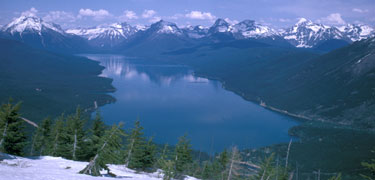MontanaGlacier National Park - photo by US National Park Service On March 14, 2010 the Eastern Native Tree Society and Western Native Tree Society switched from discussion lists on Google Groups to a new discussion list in a Bulletin Board format at: http://www.ents-bbs.org/index.php Posts made since the inception of the BBS on March 14, 2010 will be sorted and archived on the BBS. Click on the link to go to the equivalent section on the new BBS. This website will continue to serve as a front end for the ENTS and WNTS groups. It will continue to serve as a repository of older posts, and will serve as the host site for special projects and features that are not well suited for a BBS format. Please visit the BBS for the latest information and trip reports.
Field Trips and Discussions
Losensky (1993) estimated that in 1900, 55% of dry ponderosa pine/Douglas-fir forests in western Montana were maintained in potential old-growth status (180+ years), and that mature, but non-old-growth, stands accounted for another 16% of the total. Large portions of currently non-forested valley bottoms were covered with fire-maintained, old-growth ponderosa pine forests as well (Leiberg 1899). As a result of logging and fire suppression, few old-growth structured ponderosa pine/Douglas-fir stands remain in Montana (Fischer and Bradley 1987, Losensky 1993, Yanishevsky 1993). In fact, ponderosa pine is the most endangered old-growth forest type in Montana (Yanishevsky 1993). Until a comprehensive inventory of dry forest old growth is undertaken, it is essential to retain existing stands.
February 16, 2001: The work being done by the Forest Management Bureau of the Trust Lands Management Division (TLMD) of the Department of Natural Resources and Conservation (DNRC) on Montana’s old growth issue is little known to most Montanans...Of the 700,000 state-owned forested acres, under the proposed old growth direction, approximately 71,000 acres will be maintained as old growth forest. A portion of the 71,000 acres will be accounted for in the 96,000 acres in western Montana and 60,000-plus acres in eastern Montana already deferred from management due to lack of access, steep topography, marginal economic value, and SMZ (Streamside Management Zone) restrictions.
|
